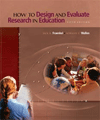 |  How to Design and Evaluate Research in Education, 5/e Jack R. Fraenkel,
San Francisco State University
Norman E. Wallen,
San Francisco State University
Single-Subject Research
| A-B-A-B design | Same as an A-B-A design, except that a second treatment is added.
|  |  |  | | A-B-A design | Same as the A-B design except a second baseline is added.
|  |  |  | | A-B-C-B design | Same as A-B-A-B design except that the second baseline phase is replaced by a modified treatment phase.
|  |  |  | | A-B design | A single-subject experimental design in which measurements are repeatedly made until stability is presumably established (baseline), after which treatment is introduced and an appropriate number of measurements are made.
|  |  |  | | B-A-B design | The same as an A-B-A-B design, except that the initial baseline phase is omitted.
|  |  |  | | Baseline | The graphic record of measurements taken prior to introduction of an intervention in a time-series design.
|  |  |  | | Multiple-baseline design | A single-subject experimental design in which baseline data are collected on several behaviors for one subject, after which the treatment is applied sequentially over a period of time to each behavior one at a time until all behaviors are under treatment. Also used to collect-data on different subjects with regard to a single behavior, or to assess a subject's behavior in different settings.
|  |  |  | | Single-subject design | Designs applied when the sample size is one; used to study the behavior change that an individual exhibits as a result of some intervention or treatment.
|
|



 2003 McGraw-Hill Higher Education
2003 McGraw-Hill Higher Education